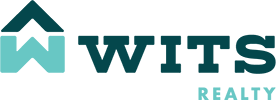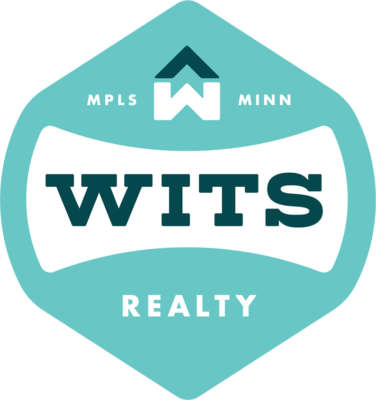How to Identify a House Hack

By Brady Erickson | Realtor
House hacking strategy can range from the extraordinarily obvious to the remarkably nuanced. On the most fundamental level, the novice hacker wants to find a place to call home that can also be leveraged for other purposes. This may look like something as simple as renting out a spare bedroom or even a garage stall. On the other end of the spectrum, more complicated versions of a hack may involve sizable construction projects and/or zoning conversions. No matter your level of ambition, it is imperative to have a proper filter through which one can make sound judgments on a property’s potential. Let’s look at a few of the metrics that help us better filter a property:
Size
The phrase “economies of scale” should become familiar to a house hacker if it is not already. Simply explained, buying small costs more, comparatively, than buying big. Think Costco vs. Etsy. For one to make the most of a house hack, buying the Costco house – for lack of a better term – will win the day.
In real estate, one will see this play out as the average price per square foot (PSF). The larger the home, the lower the average PSF. Minneapolis gives us good examples of this if one compares an average 1,000 sqft bungalow to an average 3,000 sqft 2-story. In almost every case, the 2-story will not cost 3 times more than the bungalow. Ordinarily, PSF is not a useful metric to gauge value, speaking in the traditional real estate sense. However, the savvy hacker can exploit the size by filling the extra area with roommates/renters by utilizing otherwise unused bedrooms or even adding additional bedrooms within the footprint.
Privacy
We have touched on this in previous articles within our House Hacking Series, but it is worth touching on again. There is a privacy spectrum of types of house hacks. It can range from having no privacy by renting out all the rooms in a house and sleeping behind a sheet in the living room, to having totally separate buildings on the same property and never seeing one’s tenants.
The reason this is important is the degree of privacy one needs will impact the type of property one will buy. If someone wants the privacy that a duplex can provide, yet that person is only looking at single-family house homes, we have a problem. Luckily, just knowing wants and needs on the front end can solve this.
Numbers

This is the good stuff. Your idea of a “good deal” may look a little different, so if this model doesn’t quite align, then change it. Remember real estate here to work for your goals.
For a property to be considered a house hack, a person needs to be offsetting some of the mortgage, which means there needs to be something on the property that is rentable. Likely that will be a bedroom or perhaps a garage. This is mainly helpful when thinking about the house hack as your long term home. If and when you move out, you may need to sell this property if it doesn’t make enough money to be a good, stand-alone rental. Most people want a little more out of their house hack though, which leads us to the suggested base level house hack:
Your property should break-even or better when you move out.
That means income (rent) should be at least as much as all expenses (including reserves for unexpected expenses). Every time you underwrite a property for a house hack, you need to know what happens if you don’t live there anymore. After doing the number crunching, you can just treat yourself as one of your tenants; congratulations you now rent from yourself!
Here are a couple of examples you might see in Minneapolis or the surrounding areas as of the time of publishing:
Example #1
Income:
4BR Single Family ($250,000)
Rent: $525/room $2,100
Additional income: 1 stall garage rental $50/mo.
Total Income: $2,150
Expenses:
Monthly Payment (5% as a down payment): $1,510
Capital Expenditures: $225/mo.
Variable Maintenance: $75/mo.
Vacancy: $86/mo. (4% of rent)
Misc: $25/mo.
Total Cash Flow: $229/mo.
Example #2
Income:
4BR Duplex ($325,000)
Rent: $1300/unit
Additional Income: 1 stall garage rental $50/mo.
Total Income: $2,700
Expenses:
Monthly Payment (5% as a down payment): $1,975
Capital Expenditures: $300/mo.
Variable Maintenance: $75/mo.
Vacancy: $108/mo. (4% of rent)
Owner Paid Utilities: $75/mo.
Misc: $25/mo.
Total Cash Flow: $142/mo.
Conclusions
Any time the search for a house hack begins, it is important to be confident in your priorities and goals. There are many ways to skin a cat, but you may find one way that works particularly best for your situation. Let your priorities guide your search criteria, and lean into an expert who can help with filtering promising properties. Happy Hacking!
Keep up with Wits
More from the Wits Blog:
4 Great Ways to Make Money In Real Estate
From the outside it can seem like people that invest in real estate have secret powers. While no investor would confess to having a genie at their disposal, the reality is they do have something not everyone has: They have knowledge.
Is Twin Cities Housing In Bubble Trouble?
By Brady Erickson, Realtor Short answer: No. Long answer: No, not really. Understandably, there is a bit of a recency bias when it comes to how one feels about the future of the real estate market. We are not all that far removed from the bursting of the housing bubble, and that is certainly informing…



